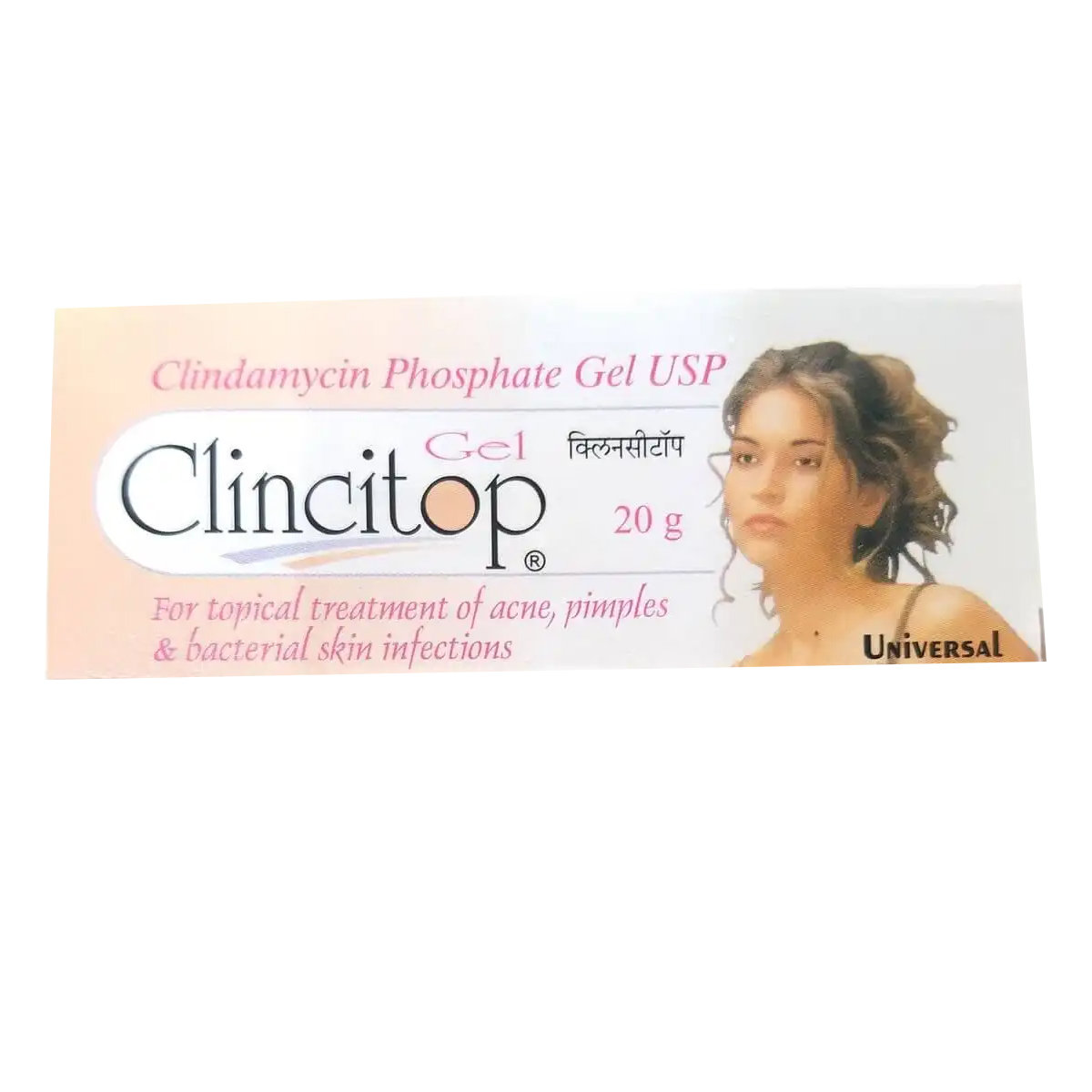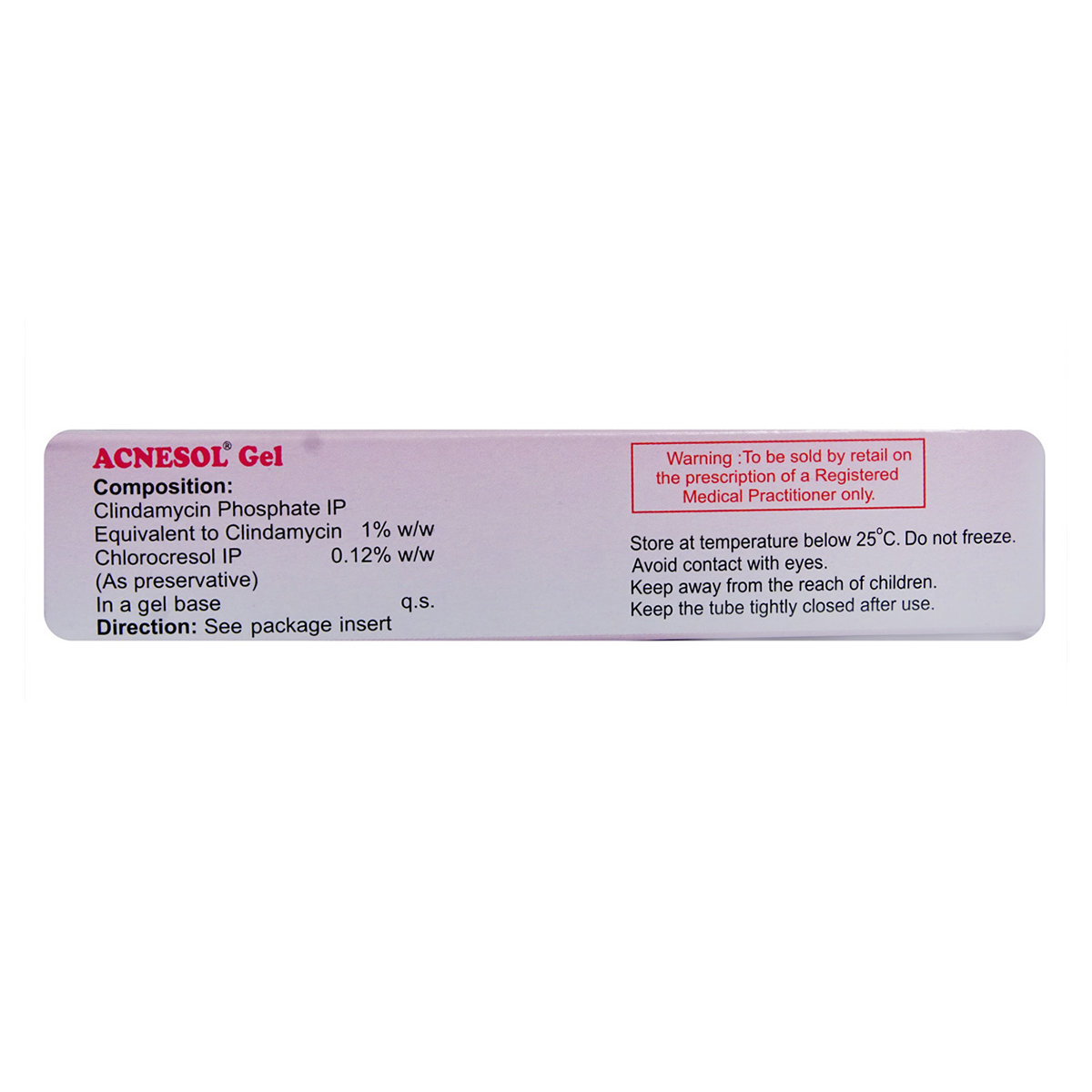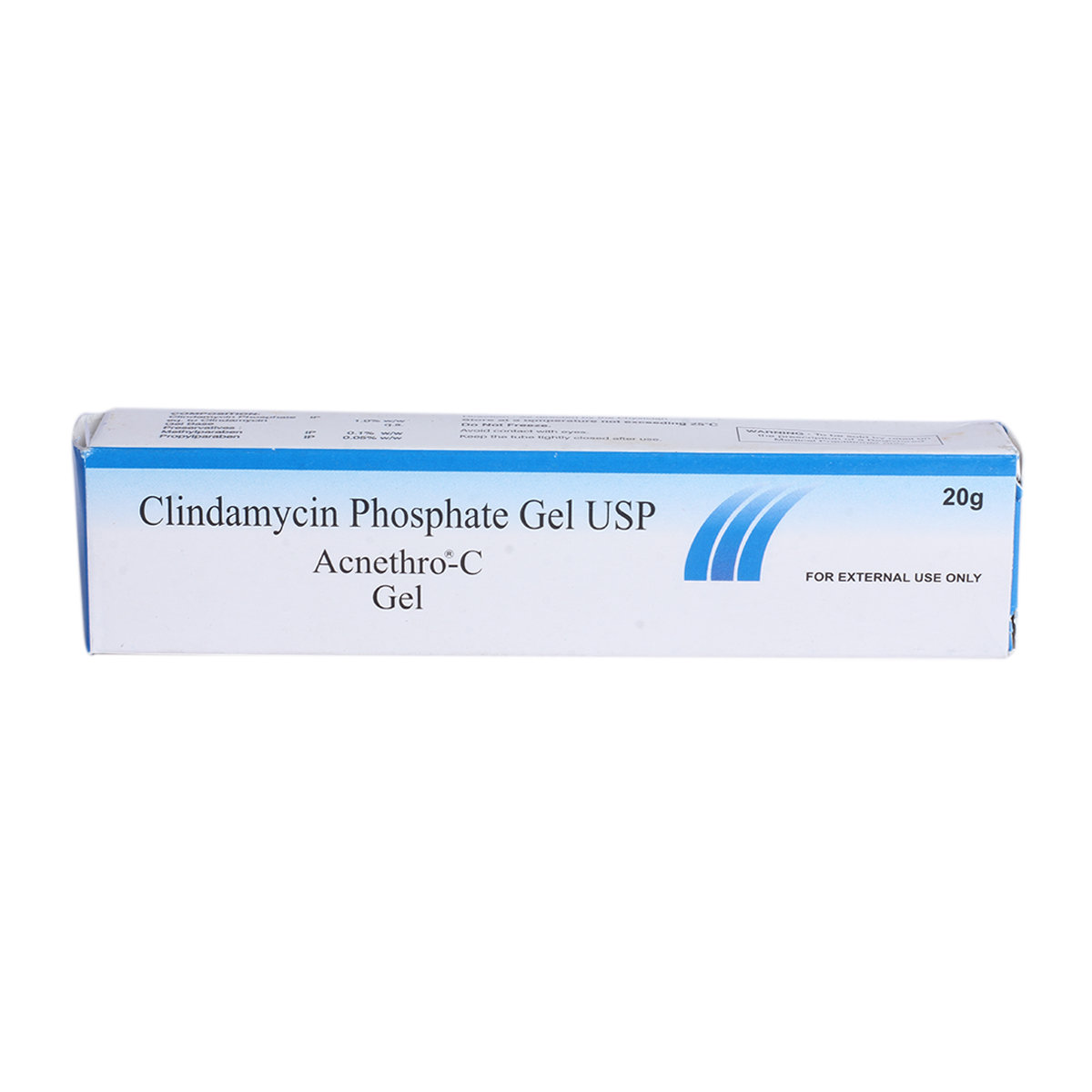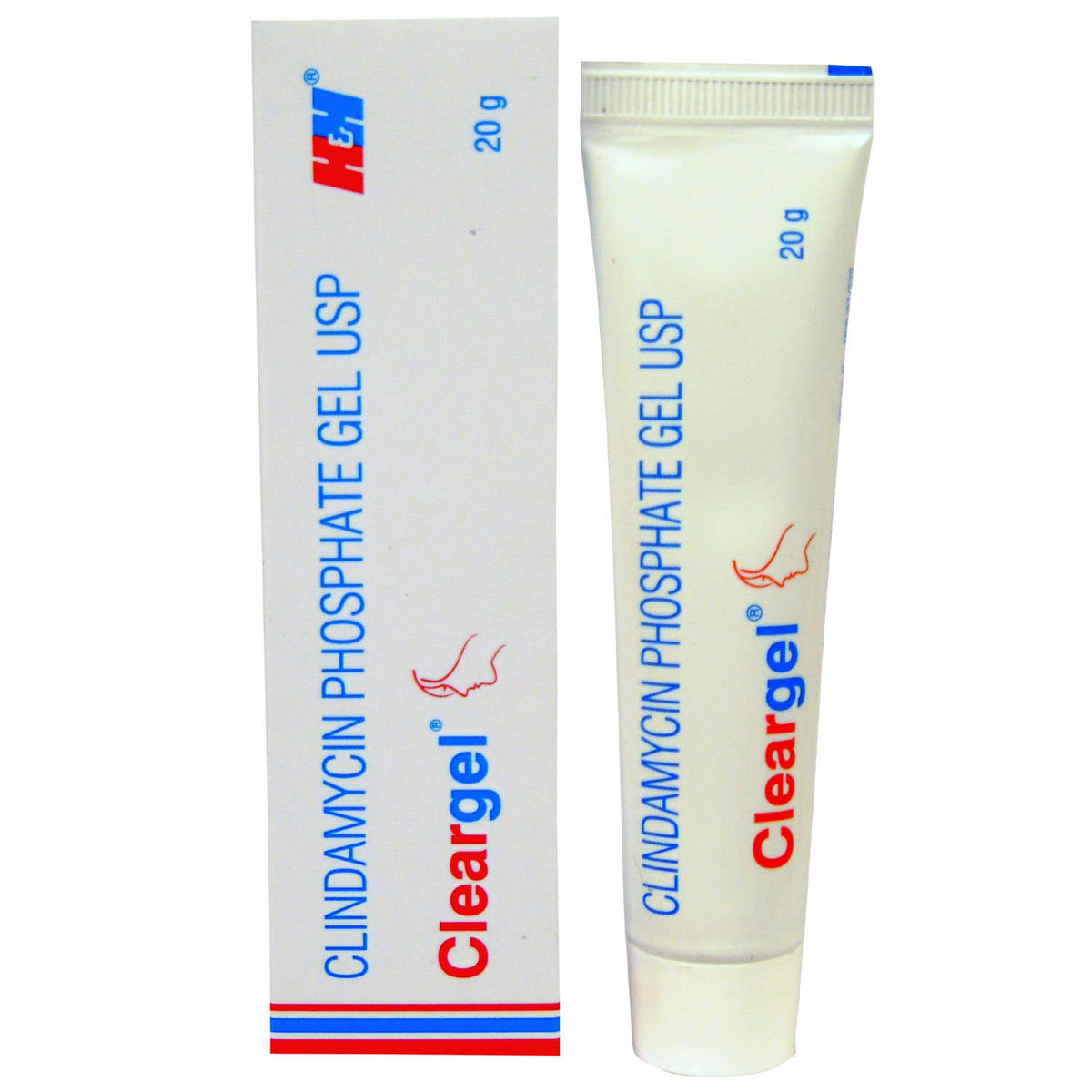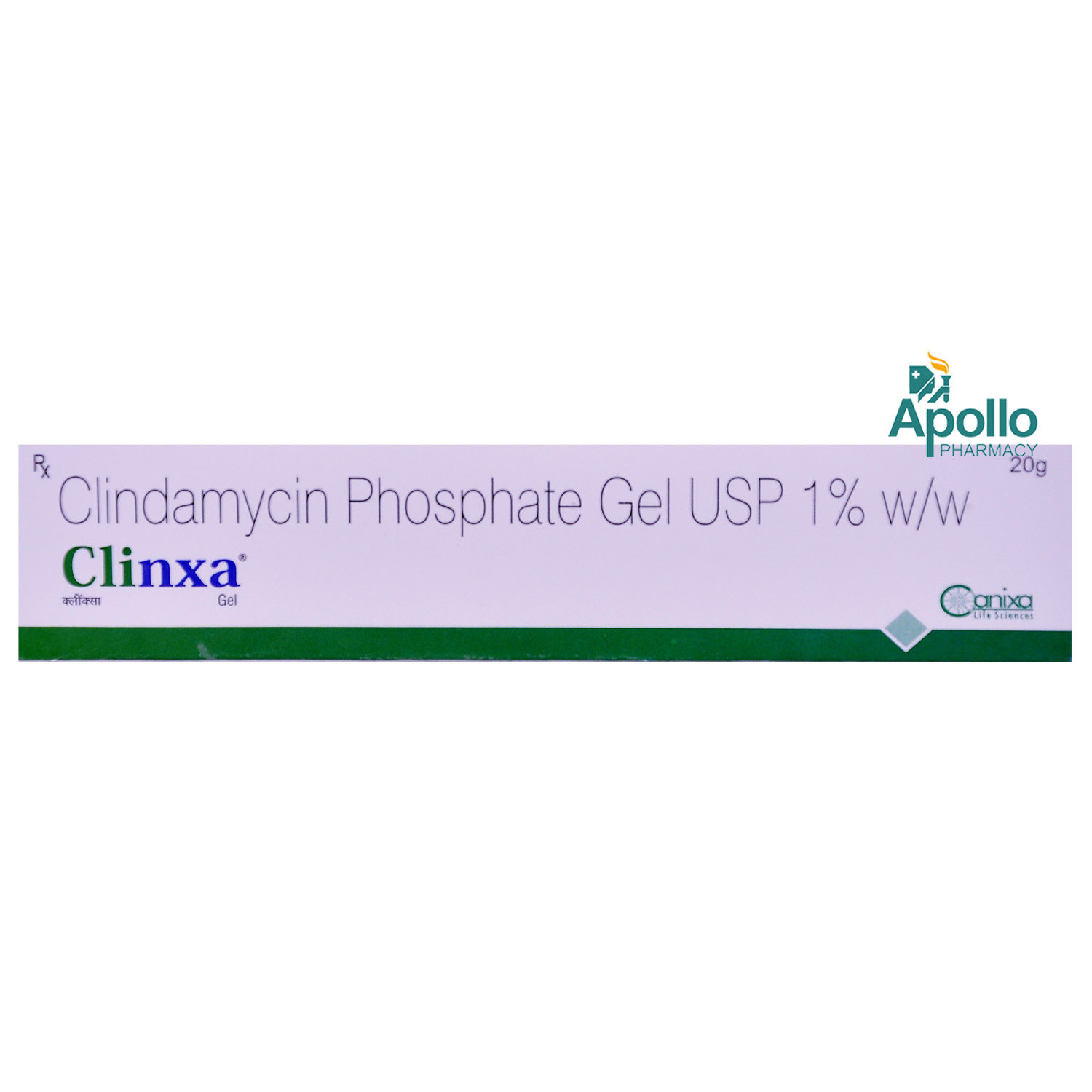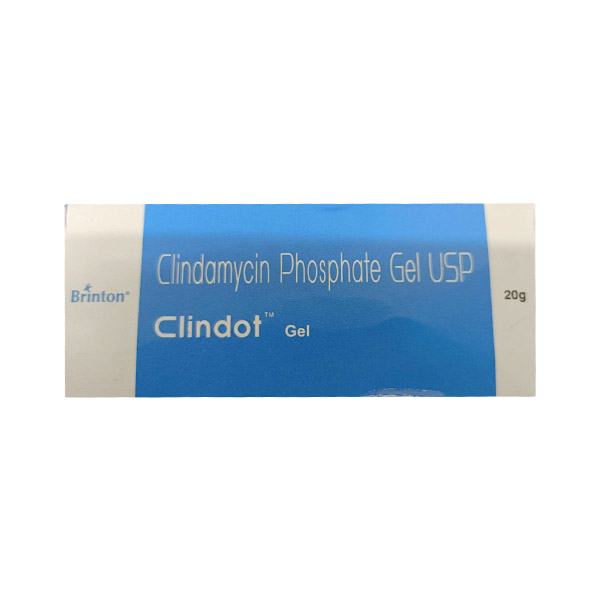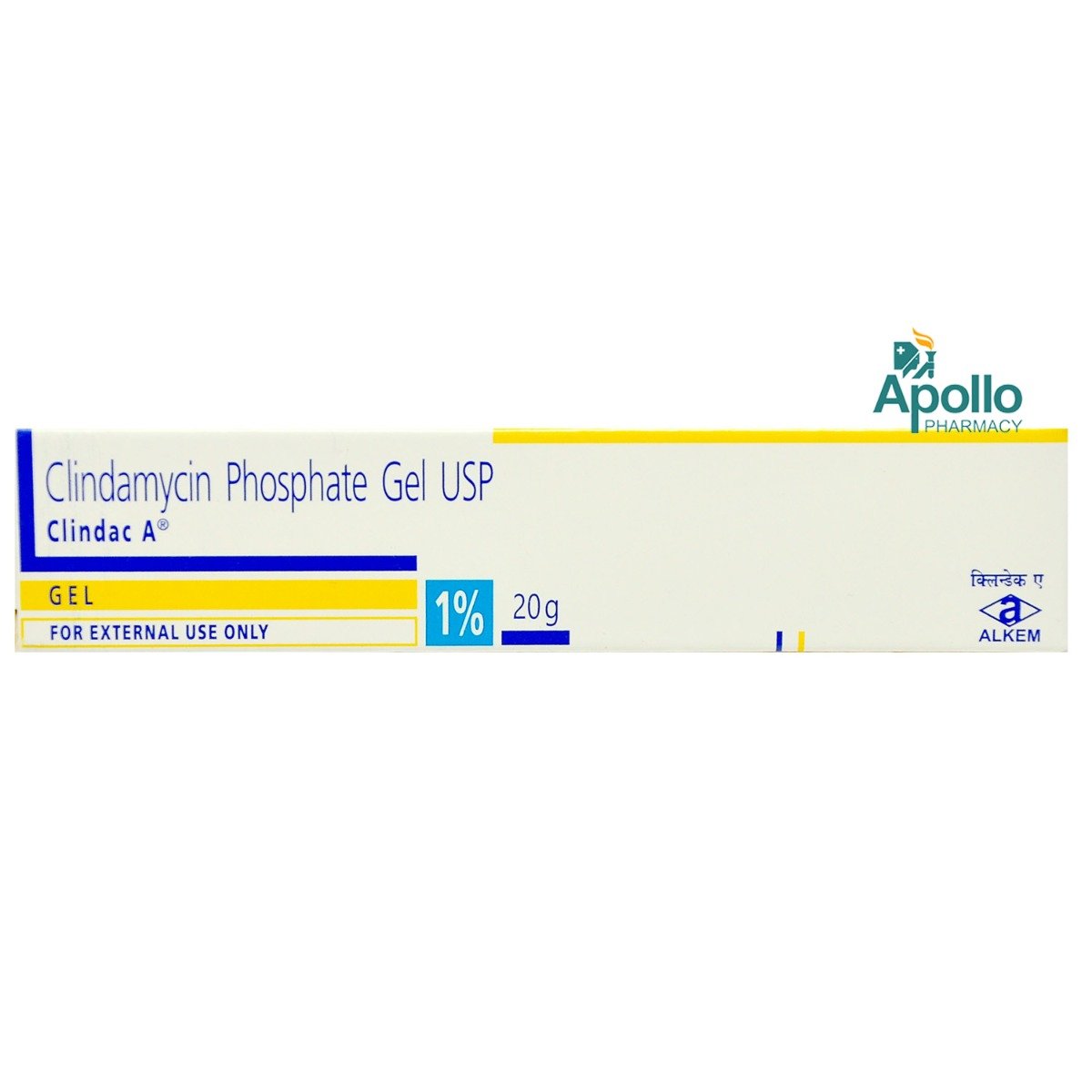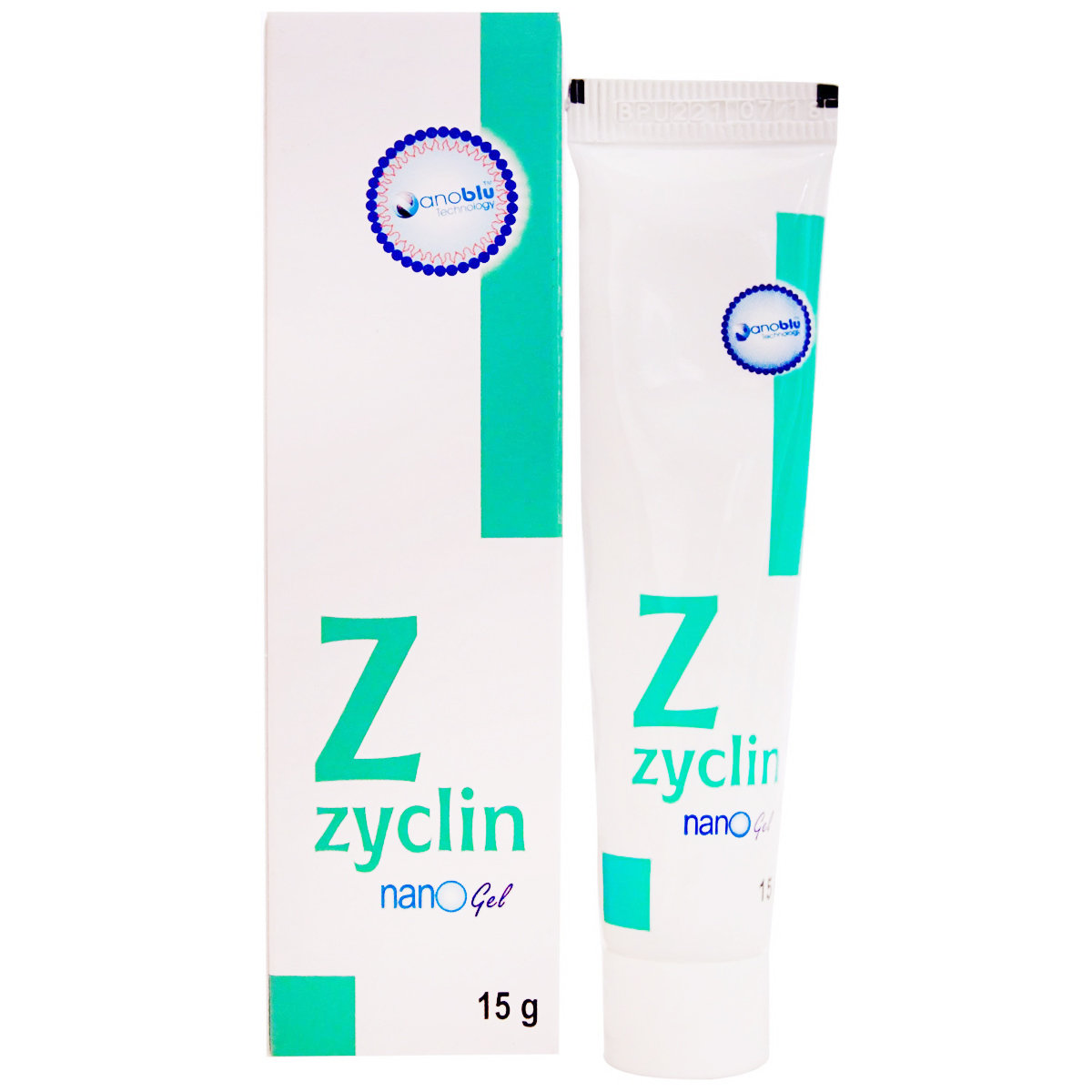Wegamycin Gel 15 gm
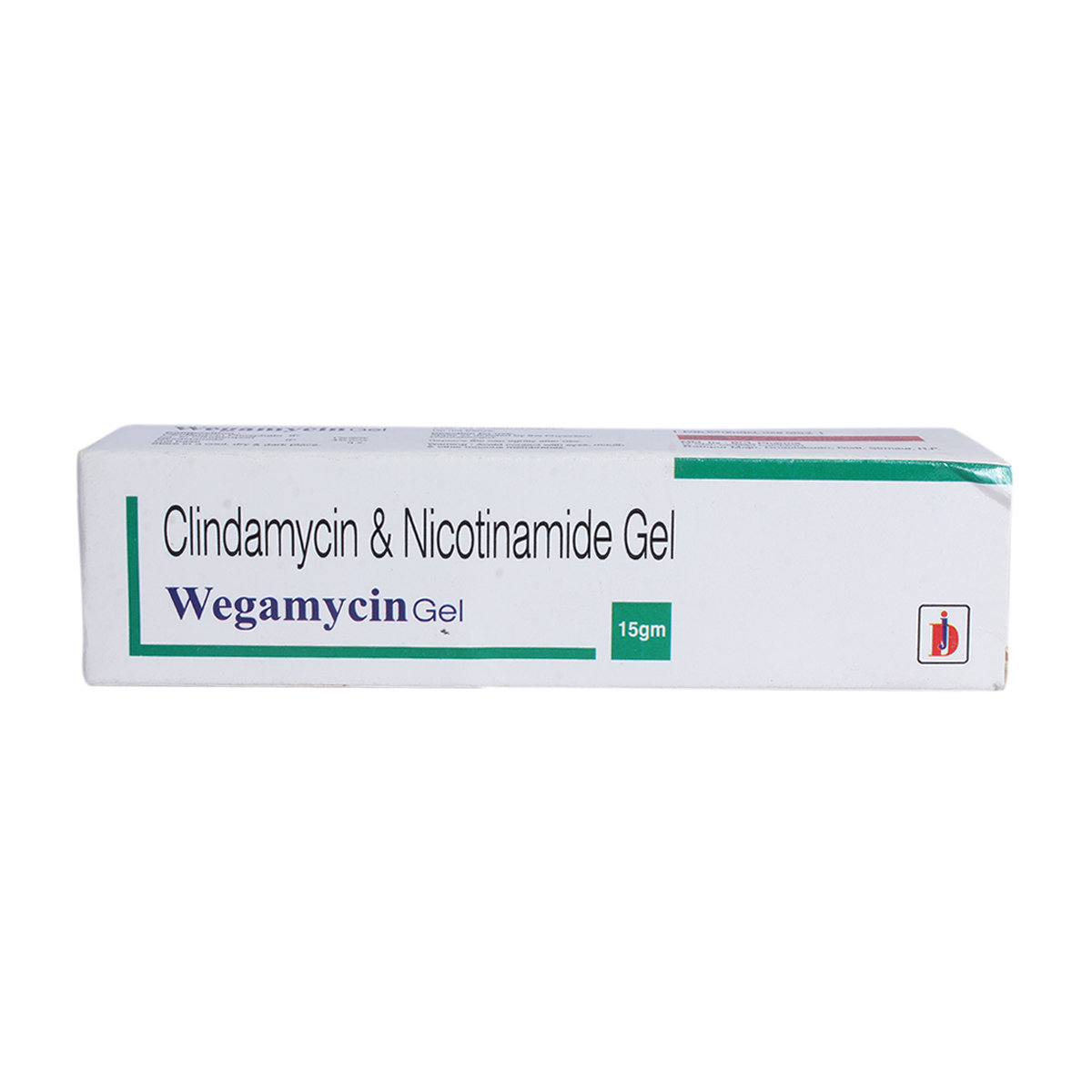
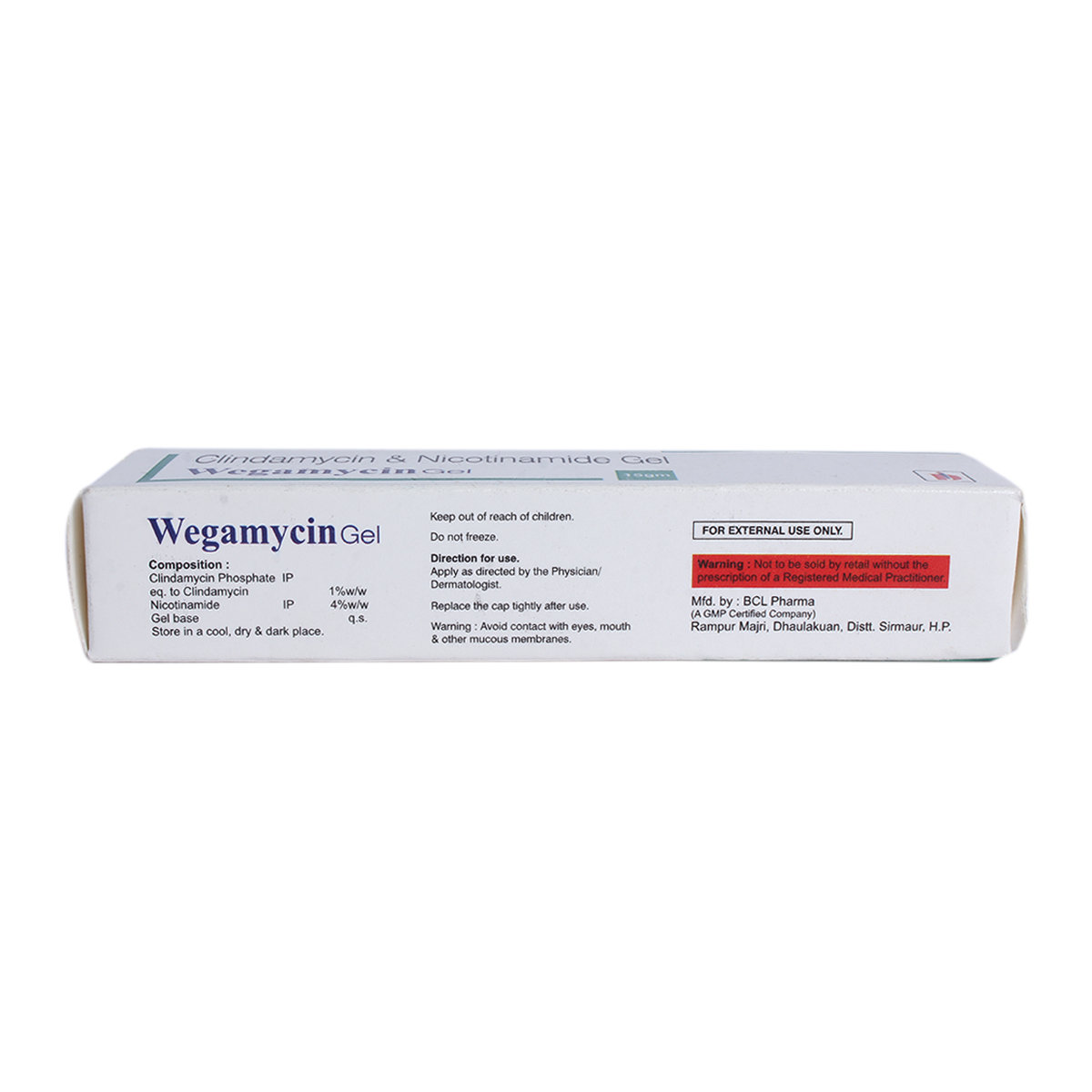
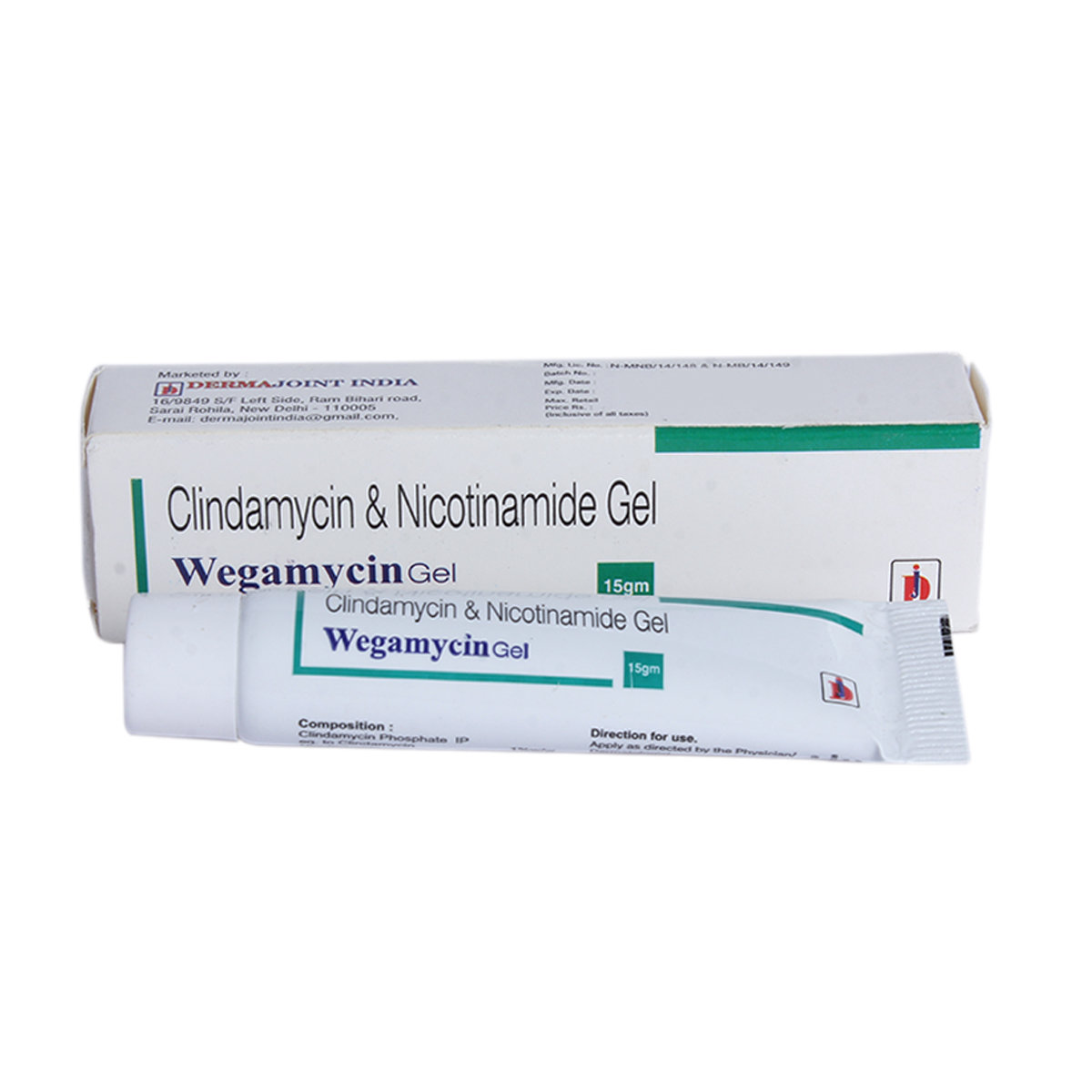



MRP ₹225
(Inclusive of all Taxes)
₹33.8 Cashback (15%)
Selected Pack Size:15 gm
15 gm ₹202.5
(₹13.5 / 1 gm)
Out of stock
20 gm ₹240.3
(₹12.02 / 1 gm)
In Stock
Provide Delivery Location
Online payment accepted
 Prescription drug
Prescription drugWhats That
Composition :
Manufacturer/Marketer :
Consume Type :
Return Policy :
Expires on or after :
About Wegamycin Gel
Wegamycin Gel belongs to the class of medication called 'antibiotics' primarily used to treat acne (pimples). Acne is a skin condition caused when the hair follicles are plugged with oil and dead skin cells. Symptoms include blackheads, pus-filled pimples, and large/red bumps.
Wegamycin Gel contains 'Clindamycin' that works by inhibiting bacterial protein synthesis, which stops bacterial growth. It shows a bacteriostatic effect, which prevents the multiplication of bacteria.
Wegamycin Gel is for external (for skin) use only. Avoid contact with eyes, eyelids, lips, and mouth. Like all medicines, Wegamycin Gel also causes side effects, although not everybody gets them. Common side effects of Wegamycin Gel include burning sensation, itching, dryness, redness, oily skin, and peeling of the skin. Most of these side effects do not require medical attention and gradually resolve over time. If these side effects persist longer, please consult your doctor.
Please tell your doctor if you are allergic to any of the components in Wegamycin Gel. Let your doctor know if you have a history of eczema, dermatitis (inflammation of the skin), inflammatory bowel disease or antibiotic-associated colitis (inflammation of the colon). Do not use Wegamycin Gel on sunburnt, dry, or irritated skin. Let your doctor know if you are pregnant, planning to conceive, or a breastfeeding mother before using Wegamycin Gel. Wegamycin Gel is not recommended for children below 12 years of age.
Uses of Wegamycin Gel
Directions for Use
Medicinal Benefits
Wegamycin Gel is an antibiotic that treats acne (pimples). It contains Clindamycin which works by inhibiting bacterial protein synthesis, which inhibits bacterial growth. It shows a bacteriostatic effect, which stops bacterial reproduction but doesn't kill them.
Storage
Drug Warnings
Do not use Wegamycin Gel if you are allergic to any of its components. Let your doctor know if you have any liver disease, kidney disease, gastrointestinal diseases (colitis, an inflammation of the colon), and allergic conditions (asthma, hay fever, eczema, and dermatitis). Please limit the use of products that contain large amounts of alcohol (astringents, shaving creams or after-shave lotions), hair removal products, and products containing lime or spices while using Wegamycin Gel. Do not apply Wegamycin Gel on mucous membranes, lesions, and large areas of skin. Pregnant and breastfeeding women should consult their doctor before using Wegamycin Gel. Wegamycin Gel is not recommended in children below 12 years of age.
Drug-Drug Interactions
Drug-Drug Interactions
Login/Sign Up
Drug-Food Interactions
Drug-Food Interactions
Login/Sign Up
Diet & Lifestyle Advise
- Avoid harsh products on your skin.
- Do not share cosmetic products, face towels, and bathing bars.
- Manage stress, eat healthily, drink plenty of water, exercise regularly, and get plenty of sleep.
- Avoid or limit the intake of alcohol and caffeine.
- Rinse your face with water several times a day to avoid breakouts.
- Do not scratch or pick your skin to avoid infecting the affected area.
- Hydration is important in managing acne; hence drink 3-4 litres of water daily to eliminate toxins from the body.
- Include anti-inflammatory foods in your diet.
Side Effects of Wegamycin Gel
- Burning sensation
- Itching
- Dryness
- Redness
- Oily skin
- Peeling of the skin
Habit Forming
Therapeutic Class
All Substitutes & Brand Comparisons
RX
Clincitop Gel 20 gm
Universal Twin Labs
₹57
(₹2.57/ 1gm)
80% CHEAPERRX
Romytop Plus Gel 20 gm
Kremoint Pharma Pvt Ltd
₹70
(₹3.15/ 1gm)
76% CHEAPERRX
Acnesol Gel 20 gm | Clindamycin | Anti Bacterial Gel | Treat Acne
Systopic Laboratories Pvt Ltd
₹113
(₹5.12/ 1gm)
62% CHEAPER
Product Substitutes
Author Details
We provide you with authentic, trustworthy and relevant information
Drug-Diseases Interactions
Drug-Diseases Interactions
Login/Sign Up
Almost all antibacterial medications have been associated with reports of Clostridioides difficile-associated diarrhoea (CDAD), formerly known as pseudomembranous colitis. It can vary from mild diarrhoea to deadly colitis.
How to manage the interaction:
Clostridioides difficile-associated diarrhea (CDAD) ranging from mild diarrhoea to colitis has been reported during treatment with antibacterial agents. Therapy should be administered cautiously in patients with history of gastrointestinal disease, particularly colitis and pseudomembranous colitis. Appropriate fluid and electrolyte management, protein supplementation, and antibacterial treatment of C difficile is advised.
Benzyl alcohol is frequently used as a preservative in the formulation of multidose vials for parenteral medicines. Manufacturers of pharmaceuticals believe that using them in neonates, especially preterm and underweight newborns, is contraindicated. In low birth weight preterm newborns, the use of benzyl alcohol in bacteriostatic saline intravascular flush and endotracheal tube lavage solutions has been linked to mortality and serious respiratory and metabolic problems.
How to manage the interaction:
Parenteral medications containing benzyl alcohol as a preservative are contraindicated in neonates, particularly premature infants and infants of low birth weight.
The liver is the primary site of Wegamycin Gel 15 gm metabolism. Patients with significantly impaired hepatic function may have a rise in the blood concentration of Wegamycin Gel 15 gm and a prolongation of the half-life. Additionally, the drug's usage may result in abnormal liver enzyme levels and jaundice. Patients with liver problems should receive Wegamycin Gel 15 gm therapy with caution. When given every 8 hours, dosage modifications might not be required. However, with high-dose therapy, serum concentrations should be observed, and during prolonged therapy, regular liver function tests should be carried out.
How to manage the interaction:
Wegamycin Gel 15 gm is primarily metabolized by the liver. Therapy with Wegamycin Gel 15 gm should be administered cautiously in patients with liver disease. Serum concentrations should be monitored during high-dose therapy, and periodic liver function tests should be performed during prolonged therapy.
Wegamycin Gel 15 gm is partially removed by the kidney. Wegamycin Gel 15 gm should be used with caution in individuals with significantly impaired renal function. Dosage changes are probably to be required. Serum Wegamycin Gel 15 gm concentrations should be monitored throughout high-dose therapy, and renal function tests should be conducted on a regular basis during extended medication.
How to manage the interaction:
Therapy with Wegamycin Gel 15 gm should be administered cautiously in patients with severely impaired renal function. Serum Wegamycin Gel 15 gm concentrations should be monitored during high-dose therapy, and periodic renal function tests should be performed during prolonged therapy.
Wegamycin Gel 15 gm is partially removed by the kidney. Wegamycin Gel 15 gm should be used with caution in individuals with significantly impaired renal function. Dosage changes are probably to be required. Serum Wegamycin Gel 15 gm concentrations should be monitored throughout high-dose therapy, and renal function tests should be conducted on a regular basis during extended medication.
How to manage the interaction:
Therapy with Wegamycin Gel 15 gm should be administered cautiously in patients with severely impaired renal function. Serum Wegamycin Gel 15 gm concentrations should be monitored during high-dose therapy, and periodic renal function tests should be performed during prolonged therapy.
FAQs
Wegamycin Gel is an antibiotic that treats acne or pimples. It works by inhibiting bacterial protein synthesis, which inhibits bacterial growth.
Wegamycin Gel should be used with proper caution and doctor consultation if you have any liver disease, kidney disease, gastrointestinal diseases (colitis, an inflammation of the colon), allergic conditions like asthma and hay fever, and skin problems like eczema and dermatitis.
You are recommended to use Wegamycin Gel for as long as it is advised by the doctor. Wegamycin Gel usually improves your skin condition in 4-6 weeks of treatment. Please contact your doctor if you notice no improvement after a month of treatment.
Wegamycin Gel is for topical (for skin) use only. Do not put a bandage or dressing on the affected area while treating with Wegamycin Gel unless the doctor advised doing so. Do not apply Wegamycin Gel on mucous membranes, lesions, or large areas of skin. If Wegamycin Gel comes in contact with eyes, nose or mouth, rinse with cold water.
You can leave the medicine overnight on the skin if you are using cream/gel/lotion formulations. However, if any irritation occurs, please stop usage and consult your doctor.
Drug-Drug Interactions Checker List
- ERYTHROMYCIN
- WARFARIN
- ATRACURIUM
- VECURONIUM
Special Advise
- Consult your dermatologist if you do not notice any improvement after 4-6 weeks of treatment with Wegamycin Gel.
- Foam products are flammable; keep them away from flames and extreme heat. Do not puncture or incinerate the foam canister.
- If the acne doesn't improve, ultrasound scanning of the abdomen is advised to check if there is any possibility of PCOD (Polycystic Ovarian Disease).
Disease/Condition Glossary
Acne: It is a skin condition caused when the hair follicles are plugged with oil and dead skin cells. Whiteheads, blackheads, pimples, cysts, and nodules are all types of acne. It commonly occurs in teenagers though all age groups are affected. Symptoms include blackheads, pus-filled pimples, and large/red bumps. Break-outs can happen on the face, neck, back, shoulders, and chest. The risk factors for acne are hormonal changes, polycystic ovarian syndrome (PCOS), poor sleep, stress, smoking, dermatological and cosmetic products with high oil content, and genetic conditions. Treatment involves antibiotics, retinoids, and topical products with diet and lifestyle changes.

Have a query?
Buy best Dermatology products by
Others
AYUR
FIXDERMA
BIODERMA
VENUSIA
CANDID
SELSUN
ABZORB
ATODERM
CIPHANDS
KETO
MINTOP
UVAVO
8X
MELALUMIN
MORR
OILATUM
REJUHAIR
SUNCROS
TETMOSOL
UNISON
UV DOUX
ATBRO SAFEXX
BETADINE
COLOPLAST
DR. MOREPEN
HAIR 4U
LA SCREEN
MEDERMA
RING GUARD
SHYN-ON
SOLSET
SUNSTOP
YUVINIE
A-DERMA
AHD
ALCONANZ
AQUAHOLD
AVARTA
AVENE
BIOLINE
BIOWRIGHT
CETRILAK
CUTICOLOR
CUTILOCK
DANDEL PLUS
DEOPHIN
DOUX
DYSIS
ENMASK 50
EXIZOL
FAIR INSTA
GETRYL
GORGEUS
GUNEERA
HAIR YUTH
HH MITE
I-GLOW
ITCH GUARD
KETOFLY
KETOMAC
KETOPZ
KETOSTAR
KZ
LIPZ
MANKIND
MEDRAYS
MELAGARD
MELNORA BLUV
MICROSTERILE
NO SCARS
OAKNET
ONABET
PARASOFT
PERCOS
PHOTON
PHOTOSTABLE
PHYSIOGEL
PROTEK
RADIBAN
RASHFREE
REGALIZ
RENOCIA
SALISIA
SEBANDRO
SEBORBAR
SESTRY
SOLASAFE
SOLECROSS
STERILLIUM
SUDERMA
SUN KROMA
SUNCLIP
SUNHEAL
SUNMATE
SUNTRIS
TAIYU
TEDIBAR
THERUPTOR
TRICOGRO
Glenmark Pharmaceuticals Ltd
Sun Pharmaceutical Industries Ltd
Klm Laboratories Pvt Ltd
Cipla Ltd
Canixa Life Sciences Pvt Ltd
Abbott India Ltd
Ajanta Pharma Ltd
Intas Pharmaceuticals Ltd
Dr Reddy's Laboratories Ltd
East West Pharma India Pvt Ltd
Alkem Laboratories Ltd
Atopic laboratories Pvt Ltd
Hegde & Hegde Pharmaceutica Llp
Brinton Pharmaceuticals Ltd
Torrent Pharmaceuticals Ltd
Amwill Healthcare Pvt Ltd
Leeford Healthcare Ltd
Palsons Derma Pvt Ltd
Oaknet Healthcare Pvt Ltd
Med Manor Organics Pvt Ltd
Micro Labs Ltd
Dermocare Laboratories Gujarat Llp
Fixderma India Pvt Ltd
Apex Laboratories Pvt Ltd
Mankind Pharma Pvt Ltd
Ipca Laboratories Ltd
Yaher Pharma
Systopic Laboratories Pvt Ltd
Menarini India Pvt Ltd
Ethinext Pharma
Nemus Pharmaceuticals Pvt Ltd
Skinocean Pharmaceuticals
Dermacia Healthcare
Inex Medicaments Pvt Ltd
Lupin Ltd
GlaxoSmithKline Pharmaceuticals Ltd
Talent India Pvt Ltd
Zydus Cadila
Kivi Labs Ltd
Zydus Healthcare Ltd
Hbc Dermiza Healthcare Pvt Ltd
Mrhm Pharma Pvt Ltd
Regaliz Medicare Ltd
Sol Derma Pharmaceuticals Pvt Ltd
Newtrimed Healthcare Pvt Ltd
Wallace Pharmaceuticals Pvt Ltd
Eskon Pharma
Glowderma Lab Pvt Ltd
La Pristine Bioceuticals Pvt Ltd
Mohrish Pharmaceuticals Pvt Ltd
Percos India Pvt Ltd
Rockmed Pharma Pvt Ltd
Macleods Pharmaceuticals Ltd
Praise Pharma
Ethicare Remedies Pvt Ltd
Kaizen Drugs Pvt Ltd
Aurel Biolife
Rely On Pharmaceuticals
Wockhardt Ltd
Galcare Pharmaceuticals Pvt Ltd
Elder Pharmaceuticals Ltd
Indiabulls Pharmaceuticals Pvt Ltd
La Med Healthcare Pvt Ltd
Biocute Life Care
Yap Bioceuticals
Yash Pharma Laboratories Pvt Ltd
Zee Laboratories Ltd
Apple Therapeutics Pvt Ltd
Adonis Laboratories Pvt Ltd
Albatross Healthcare Pvt Ltd
Galderma India Pvt Ltd
Prism Life Sciences Ltd
FDC Ltd
Alniche Life Sciences Pvt Ltd
Salve Pharmaceuticals Pvt Ltd
West Coast Pharmaceuticals Pvt Ltd
Dermarex HealthCare India Pvt Ltd
Arka Vital Science Pvt Ltd
Dermajoint India
Gary Pharmaceuticals Pvt Ltd
Grace Derma Healthcare Pvt Ltd
Karlin Pharmaceuticals & Exports Pvt Ltd
Skinska Pharmaceutica Pvt Ltd
Uniza Healthcare Llp
Alembic Pharmaceuticals Ltd
Cadila Healthcare Ltd
Cadila Pharmaceuticals Ltd
Cosmofix Technovation Pvt Ltd
Human Pharmaceuticals
Indolands Pharma Pvt Ltd
Lyra Laboratories Pvt Ltd
Akumentis Healthcare Ltd
Entod Pharmaceuticals Ltd
Iceberg Health Care Pvt Ltd
Jenburkt Pharmaceuticals Ltd
P and P Dermaceuticals Pvt Ltd
Dabur India Ltd
Indchemie Health Specialities Pvt Ltd
Olcare Laboratories Pvt Ltd
Unison Pharmaceuticals Pvt Ltd
BODY CREAM
Body Lotion
Face Cream
Shampoo
Sun Screen
Face Gel
Soap
Face Wash
HAIR SOLUTION
Face Serum
BODY GEL
Hair Lotion
Hair Serum
Dusting Powder
ANTISEPTIC
FACE CLEANSER
Face Lotion
Body Wash
Body Spray
Eye Cream
FUNGAL INFECTION
Foot Cream
Conditioner
Eye Gel
Cleanser
Hair Cream
Hair Oil
Face Mask
Hair Gel
Sanitizer
Hair Spray
Moisturiser
Skin Ointment
Lip Balm
Capsule
Eye Serum
Intimate Wash
Specialty Supplements
Hand Cream
Facial Spray
SPECIALITY SUPPLEMENT
Face Toner
MEDICATED SHAMPOO
Tablet
Talcum Powder
BABY SUNSCREEN
Body Butter
Body Scrub
DIAPER RASH CREAM
EYE SOLUTION
FACIAL WIPE
Gargle
Hand Wash
Intimate Spray
Lip Serum
Lubricant Gel
MEDICATED CREAM
Nail Polish
VITAMIN D
Alcohol
Caution
No interactions were found/established. Please consult your doctor if you have any concerns.
Pregnancy
Caution
Please consult your doctor before using Wegamycin Gel if you are pregnant or planning to conceive.
Breast Feeding
Caution
Please consult your doctor before using Wegamycin Gel if you are breastfeeding. If you need to apply the cream, gel or lotion on your breasts, don't do this shortly before giving a feed.
Driving
Safe if prescribed
Wegamycin Gel has no or negligible influence on the ability to drive or use machines.
Liver
Caution
Let your doctor know if you have any history of liver diseases before using Wegamycin Gel.
Kidney
Caution
Let your doctor know if you have any history of kidney diseases before using Wegamycin Gel.
Children
Unsafe
Wegamycin Gel is not recommended in children below 12 years of age.


